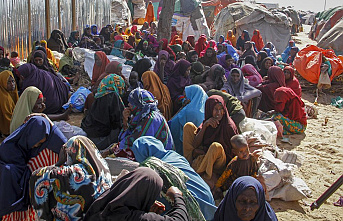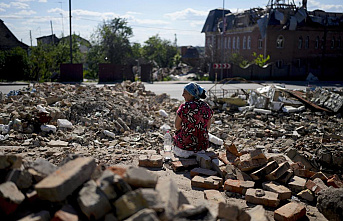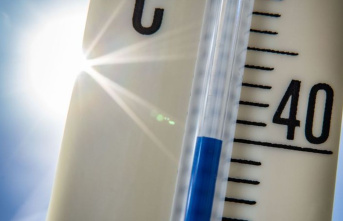Balikagala and her coworkers collected blood from patients infected with malaria for four weeks. They then treated them with powerful antimalarial drugs. After initial analysis, the team sent their samples back to Japan -- glass slides stained with blood and filter papers with blood spots.
They tested the blood slides they had made by drawing blood from patients several times per hour in their Juntendo University lab. Balikagala and her colleagues have seen the drug effectively clearing the infection in previous years. However, some patients were still suffering from the parasite this time. Balikagala recalls, "We were surprised when we did the first parasite reading in 2017, and we found that some patients had delayed clearing." It was shocking for me.
More than half a million people are killed by malaria each year, with most of these being children. However, the World Health Organization estimates that interventions have prevented approximately 10.6 million deaths from malaria between 2000 and 2020. Most of these deaths were in Africa. The majority of this progress was due to insecticides and bed nets. A new antimalarial treatment, artemisinin-based combinations therapies (or ACTs), saved a lot of lives. They replaced older drugs such as chloroquine.
ACTs are used as a first-line treatment for malaria. They have prevented a large number of deaths from the disease since their introduction in 2000. ACTs combine a derivative from the drug artemisinin and one of five drug combinations or partner drugs. The fast-acting component of artemisinin kills most parasites in a matter of days. The longer-acting partner drug eliminates the remaining ones.
The ACTs became an important part of malaria treatment. In 2009, however, researchers found evidence of resistance to artemisinin at the Thailand-Cambodia border. Because the parasite was not cleared quickly by the artemisinin component, the partner drug had the responsibility of picking up the load. This created favorable conditions for drug resistance. Multi-drug resistance is a major problem in the Greater Mekong Subregion. Scientists fear that this resistance could spread to Africa, which is responsible for over 90% of all global malaria cases.
Scientists have now confirmed that artemisinin resistance has emerged in Africa in two reports last year. In April, one study reported that ACTs failed to work for more than 10% at two sites in Rwanda. The prevalence of artemisinin-resistance mutations was also higher than detected in previous reports.
Balikagala's group published in September their report on Uganda. This report also highlighted mutations that could lead to artemisinin resistance. Alarmingly, resistant malaria parasites have increased from 3.9% in 2015 to almost 20% in 2019. Genetic analysis has shown that resistance mutations have developed in Uganda and Rwanda independently.
In December, the WHO published the latest malaria report. It also highlighted worrying signs of artemisinin resistant in the Horn of Africa on the eastern side of Africa. There have yet to be published peer-reviewed studies that confirm such resistance.
The ACTs have been shown to work so far. In an experimental setting, however, if drug resistance develops, treatment can be extended by up to three to four days. This may not seem like much to Timothy Wells chief scientific officer at the non-profit Medicines for Malaria Venture. He says that the longer the therapy is, the greater the chance of people not finishing their treatment. The parasites are exposed to the drug but not all. This leaves survivors more likely to become drug-resistant. Wells says that this is really bad news because it sets up an environment for more resistance.
Reports from Uganda and Rwanda show a grim consensus. Pascal Ringwald, WHO Global Malaria Program Coordinator, said that "We are going see more and more independent emergence." "This is exactly the same thing we saw in Greater Mekong." Wells claims that switching to other ACTs helped combat resistance, avoiding prolonged treatment.
The WHO has given a new malaria vaccine the green light. However, it won't have any major impact on drug resistance. Even the most promising drug in the pipeline will take at least four more years to be widely available.
Public health workers in Africa have one option: Track and Surveil Resistance to Artemisinin and Other Drugs. Experts say that effective surveillance systems must be implemented quickly and widely throughout Africa.
Experts agree that there is little surveillance of the continent. There is a lot of uncertainty over the extent of antimalarial resistance in sub-Saharan Africa. Also, it is difficult to know how to interpret initial reports about emerging partner drug resistance in certain countries.
"Our current systems don't work as well as they should," states Philip Rosenthal a researcher on malaria at the University of California in San Francisco. He said that the new artemisinin resistance reports can be considered a "wake-up call" to improve surveillance.
Watch out for drug resistance
Before, malaria drugs had failed. Chloroquine was used to defeat the disease in the 20th century. Around a decade later, resistance to chloroquine emerged along the Thailand-Cambodia frontier.
By the 1970s, chloroquine-resistant malaria had spread across India and into Africa, where it killed millions, many of them children. Rosenthal says that "in retrospect, it is clear that chloroquine has been used for many years after a massive resistance problem." "This likely led to millions of deaths, which could have been prevented if we had used other drugs."
Artemisinin was discovered in the flurry of research to find new drugs. Artemisinin was used by Chinese herbalists to treat malaria-like symptoms 2,000 years ago. It was discovered in the 1970s by biomedical scientists in China. The use of artemisinin became more widespread in 2000.
Researchers have been haunted by the failure to treat malaria with chloroquine. However, they are still on the lookout for signs the parasite may be resisting artemisinin and its companion drugs. A therapeutic efficacy study is the gold standard method. This involves closely monitoring patients infected with malaria while they receive antimalarial medication. It can be used to determine how effective the drug works and detect resistance.
These studies should be conducted at multiple sites within a country once every two years, according to the WHO. Philippe Guerin is the director of the Worldwide Antimalarial Resistance Network. Efficacy studies can be slow, expensive and labor-intensive. Guerin also says that you don't get a good geographic representation because there are only so many locations where you can conduct a clinical trial.
Researchers also use molecular surveillance to avoid the issues associated with efficacy studies. Researchers take a small amount of blood from the infected person and place it on filter paper. The laboratory then scans it for genetic mutations that could lead to resistance. This is a relatively simple and inexpensive technique.
These types of surveillance data allow policymakers to choose the drugs they will use in a specific region. Health authorities can also take action to stop the spread of resistance by detecting it early. This includes more aggressive screening and treatment campaigns and increased efforts to control mosquitoes that transmit malaria.
This warning system is, however, weak in practice. Rosenthal says that there is no organized surveillance system on the continent. "Surveillance can be haphazard."
Experts believe resistance may be undetected in countries without a strong health system or political instability. The border of South Sudan lies just 60 miles away from northern Uganda, where Balikagala and colleagues discovered resistance to artemisinin. Guerin says that South Sudan is not being monitored due to security concerns and a weak refugee system. Guerin adds that the same is true in parts of nearby Democratic Republic of Congo.
Regional antimalarial networks like the East African Network for Monitoring of Antimalarial Therapy (now defunct) have helped to address some gaps in surveillance. These networks are able to standardize protocols and coordinate surveillance efforts. Recent funding cuts have caused problems for these networks. The East African network "will be awakened," Balikagala predicts, as concerns about artemisinin-resistant malaria grow.
Eight countries from southern Africa have joined forces to form the Eight Initiative. This coalition aims to promote malaria elimination across borders and may aid in the jump-start of surveillance efforts.
Ringwald states that drug resistance is a top priority for him as well as his WHO colleagues. He stated that the topic was "highly on the agenda" at a meeting of the malaria policy advisory committee last fall. Ringwald sent Undark a portion of the 2021 World Malaria Report when Undark asked him how the WHO would combat African drug resistance. Although the WHO states it will work with countries to create a regional plan that can be coordinated, it does not provide any details on how that plan will be implemented. The African Centers for Disease Control and Prevention (part of the African Union) did not respond to inquiries about its plans to strengthen surveillance.
Karen Barnes, a South African Malaria Elimination Committee co-chair and a clinical pharmacist at the University of Cape Town, says that researchers have an ethical responsibility to share information as soon as they can. "And make every effort to ensure that it is not the same as when there was chloroquine resistance.
Despite all the worries, there are signs of hope
Reports have identified troubling, but not conclusive, signs of drug resistance in partner drugs, despite the lack of a more thorough surveillance.
A series of four studies conducted between 2013 and 2019 at several sites in Angola found the efficacy of artemether-lumefantrine -- the most widely used ACT in Africa -- had dropped below 90%, the WHO threshold for acceptable malaria treatment. Similar results were reported by peer-reviewed studies from Burkina Faso, and the Democratic Republic of the Congo.
Studies have not identified genes that are associated with artemisinin-resistant genes, which suggests that lumefantrine might be in trouble. However, several researchers in malaria said Undark that they were skeptical about the methods used and considered the results preliminary. Ringwald says, "I would prefer that we looked at data using a standard protocol and excluded any confounding factors such as poor microscopy or an analytical method."
Mateusz Plucinski (an epidemiologist from the U.S. Centers for Disease Control and Prevention's Malaria Branch) defended the findings. "The persistence of artemether-lumefantrine efficacy near or under 90% in Angola likely suggests that there is likely a true signal of decreased susceptibility of parasites to this drug," he wrote in an email to Undark. Angolan health officials responded to this data by using a new ACT.
It's not clear at this stage how dire the situation in Africa is, or what the future holds. According to Leann, a biochemist from the University of Melbourne, who studies antimalarial resistance, the research community and authorities "are at the level of just looking and seeing what happens at that stage." Experts say that if artemisinin resistant develops and begins to impinge on the partner drug's ability to function, policymakers may need to change to another ACT or deploy triple ACTs with both partner drugs.
Experts believe that artemisinin resistance may spread slower in Africa than in Southeast Asia. However, if artemisinin resistance and other partner drugs developed, it could put Africa in serious trouble. At the moment, there are no replacements for ACTs. Wells says that the Medicines for Malaria Venture drug pipeline contains about 30 potential medicines that have been tested in preliminary testing. Another 15 molecules are currently undergoing clinical trials for safety and efficacy. Even the drugs at the end will need to wait about five to six more years for approval by regulatory authorities before they can be included in WHO guidelines.
Wells mentioned one promising compound from Novartis that performed well during early clinical trials. Wells claims that the drug will not be available for use in Africa until 2026.
Scientists worry that funds for malaria control and elimination programs are still limited. Between COVID-19, the rollout of the malaria vaccine, and COVID-19, scientists fear that resources and attention for drug resistance surveillance and research might be dwindling. Barnes says, "I hope those with resources will see that investing in Africa's artemisinin resistance response today, or at least yesterday, is probably the best place they can put their money."
Time and again, the annals of malaria show that once resistance is developed, it spreads and threatens progress against this deadly disease. Barnes says that the signs are pointing to Africa. She asks the bigger question: "Are you capable of learning from past experiences?"











